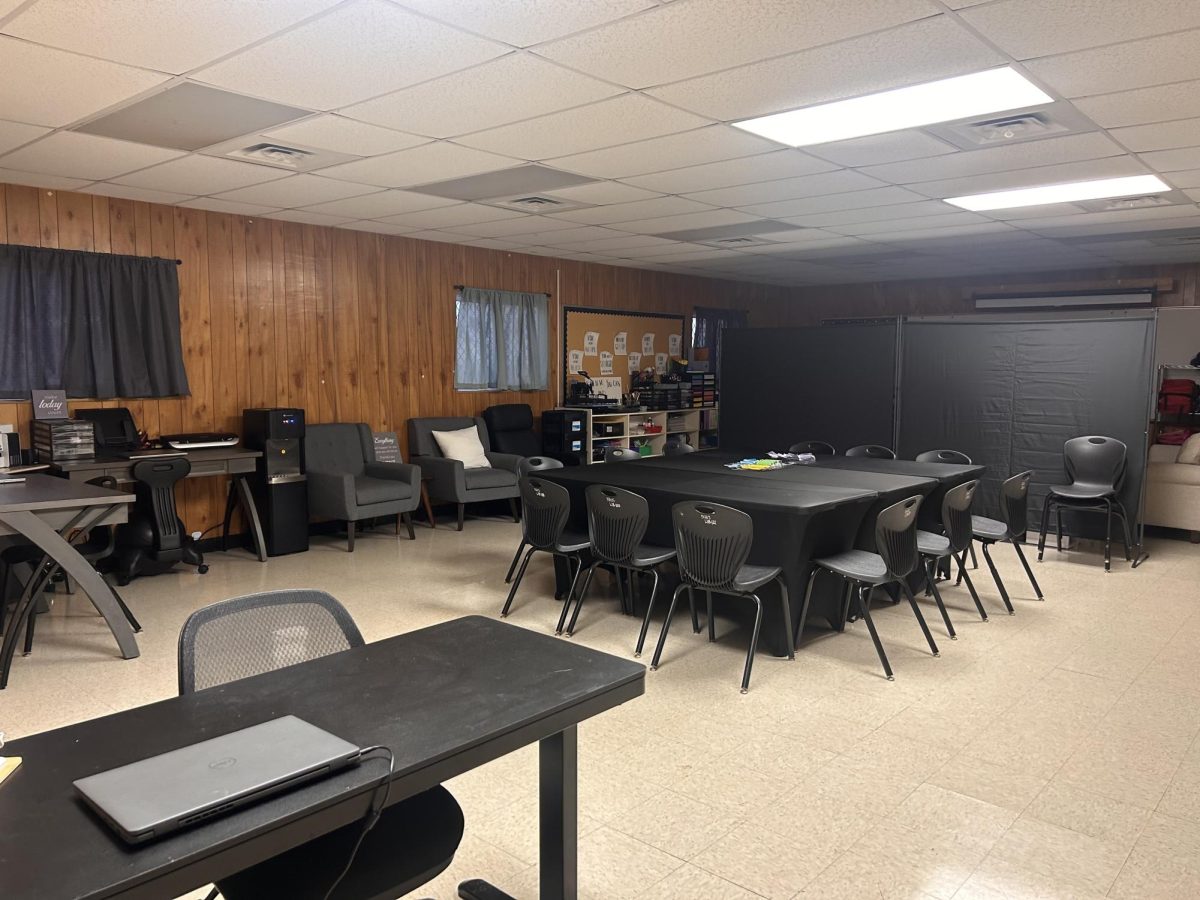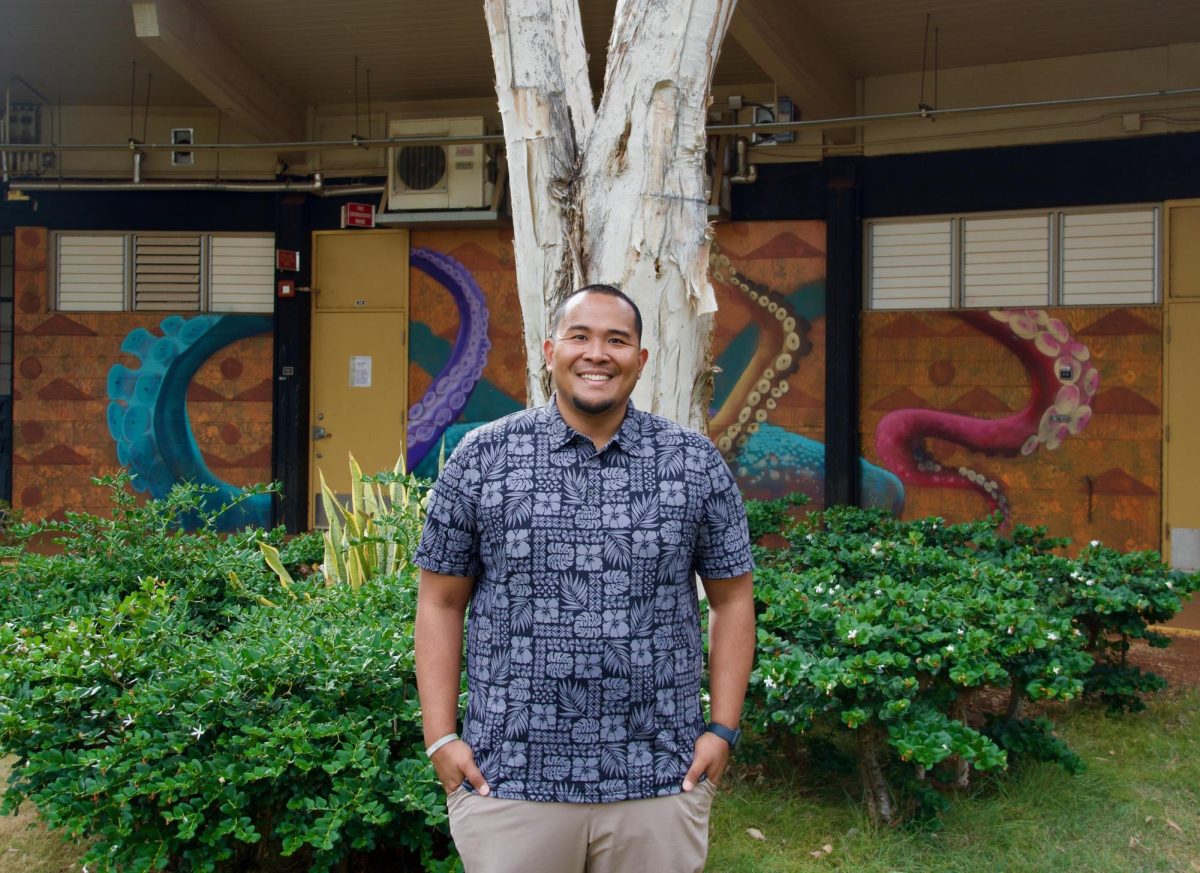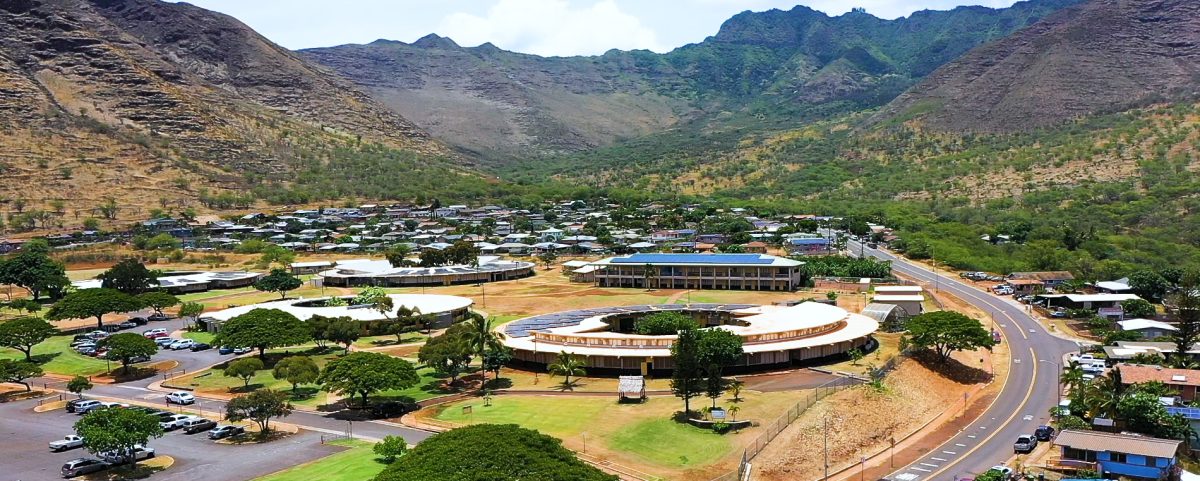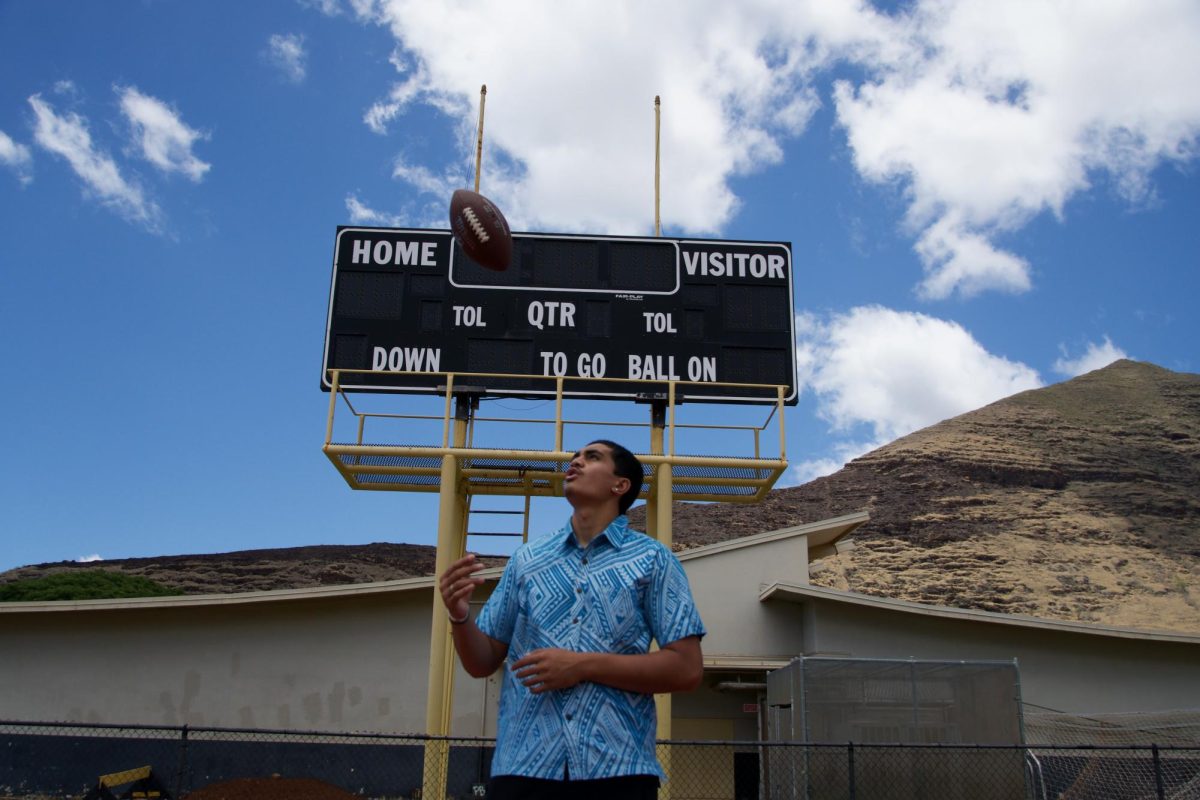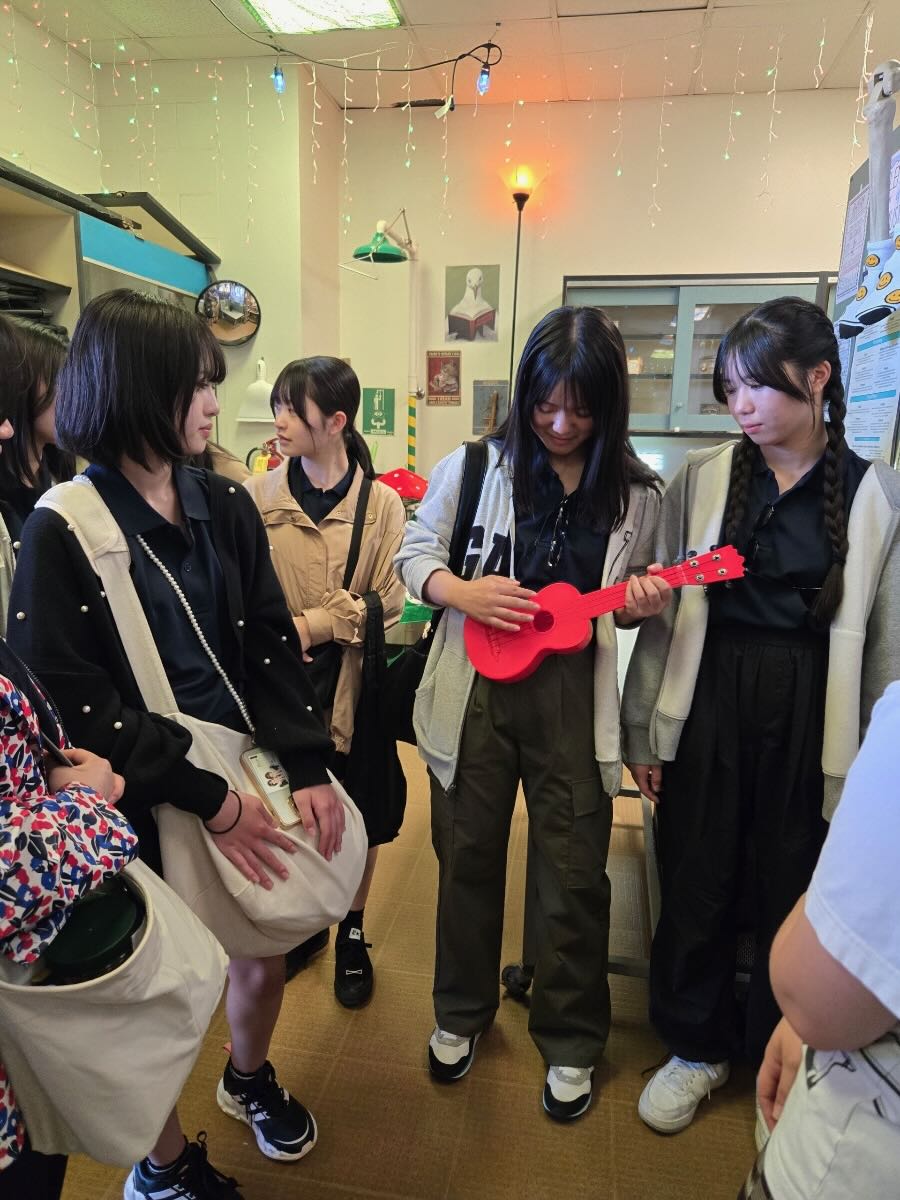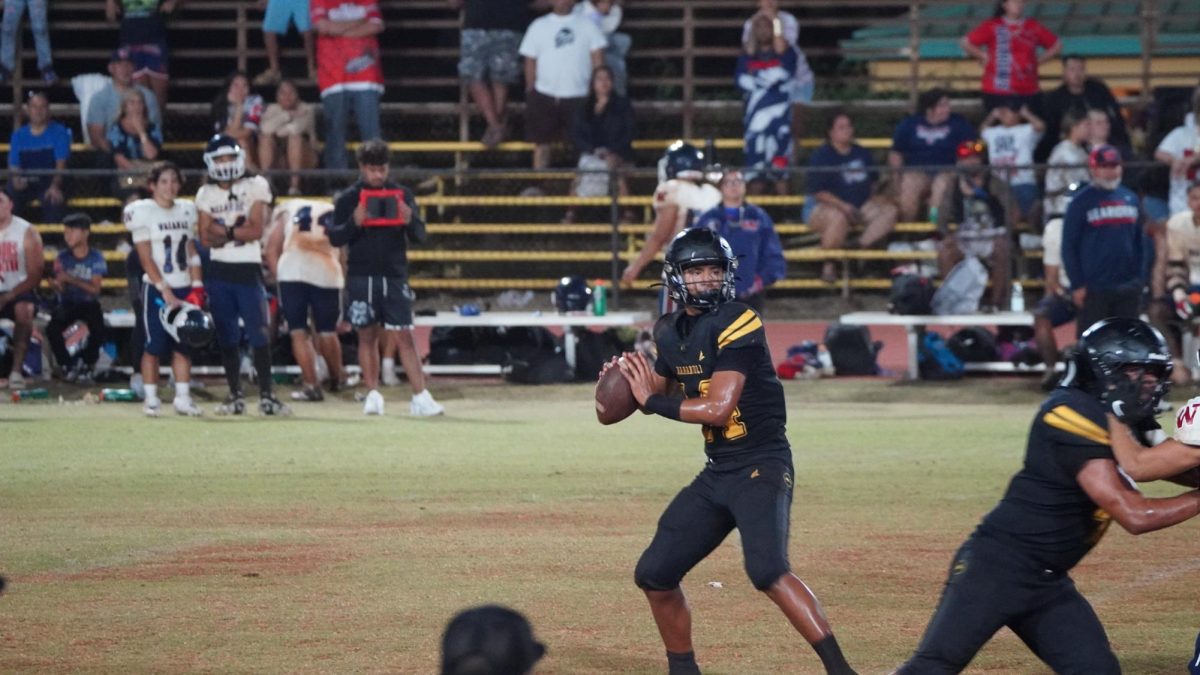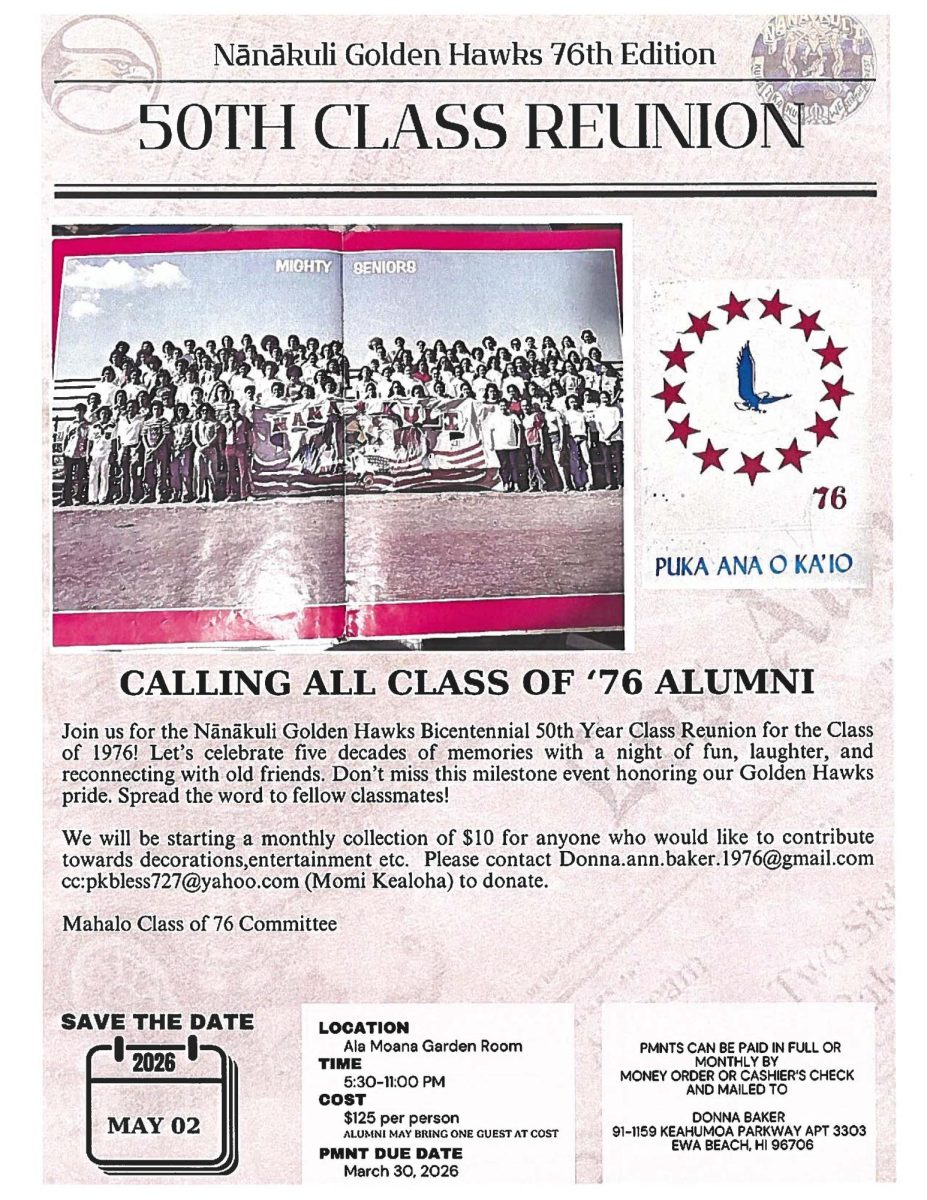On April 29, 2025, Ka Waihona O Ka Naʻuao Public Charter School (KWON) hosted a public meeting at Hale Aina on their campus, inviting community members to discuss the future of education at Nanakuli High and Intermediate School (NHIS). The session aimed to present and explore potential changes, including the possibility of converting NHIS into a conversion charter school, and to gather input from local community members and stakeholders.
The meeting was led by KWON’s principal, Dr. Kalehua Krug, who opened the session by explaining the purpose of the gathering and the broader goals behind, providing a clear explanation of the session’s objectives.
He outlined that KWON was exploring the potential of expanding into high school education and that the gathering was a crucial first step in a long-term process.
“This is just the beginning of a difficult conversation,” Krug explained. “We want to hear from everyone, whether you’re a parent, teacher, or community member, as we start to map out what the future of Nānākuli High and Intermediate School could look like.”
KWON’s Vision:
In his presentation, Krug outlined the two primary options in KWON’s idea for the future of NHIS: leaving it as a traditional Department of Education (DOE) school or potentially transitioning it into a charter school. The proposed charter school model could either be a solo NHIS charter conversion or a partnership with KWON where they would work with a community group to design a detailed conversion plan. This would involve acquiring land leases, designing curriculum, and submitting an application to the Hawai’i State Charter School Commission (HSCSC).
“Ultimately, this is a community-driven process,” Krug emphasized. “We’re not just asking for your opinions, we’re inviting you to be part of shaping the future of education here in Nānākuli.”
NHIS’ Vision:
In an interview with Dr. Christine Udarbe-Valdez, Principal of NHIS, she expressed her commitment to transparency, collaboration, and the long-term success of the NHIS community.
“My goal in these discussions is to ensure that any future conversations about NHIS or consideration of significant changes to our school structure are aligned with our vision and mission, and are conducted with full transparency, adherence to legal processes, and in a manner that truly involves our entire school community,” said Udarbe-Valdez.
Looking toward the future, she said the school’s focus remains on cultural relevance, student well-being, and academic improvement.
“We are actively exploring and developing pathways to enhance and expand Hawaiian language opportunities, fostering a safe and supportive learning environment. Our campus is safe, and we’ve seen marked improvements in student interactions and their engagement in resolving issues. We will continue to prioritize a positive and nurturing environment where students feel safe and empowered to learn,” Udarbe-Valdez added.
Udarbe-Valdez gave praise to the staff, students, and families for the school’s progress. “The progress we’ve seen in the past year is a testament to the dedication of our students, our staff, and our families. I’m incredibly proud of everyone.” she said “Let’s continue to support our Golden Hawks as they thrive and soar high,” said Udarbe-Valdez.
Reaction From Community
The proposal to potentially convert NHIS into a charter school sparked a wide range of reactions from the community, some hopeful, others skeptical.
Community member Angela Hoppe Cruz expressed appreciation for the openness of the dialogue. “I really truly appreciate difficult conversations. I don’t believe we can grow unless we have those,” she said, acknowledging the importance of honest discussion in shaping the future of education in Nānākuli.
During the meeting, Kaui Asinsin, a staff member at NHIS and a parent of a student, expressed deeper concerns about how the proposed changes might affect student-athletes and the broader school identity. Specifically, she raised questions about what would happen to sports programs if the school transitioned to a charter model.
“You did say that sports can continue on, but in that same answer you said if they could for some reason we don’t, they could go to their home school. This is their home school, right? This is our home school. So then that would mean home school could be Wai‘anae or Kapolei, which means they would be Hurricanes or Seariders,” Asinsin said.
Her comment underscored a common sentiment in the community, that sports are not just extracurriculars but a vital part of student attendance and school pride.
In a follow-up interview, Asinsin further voiced her frustration and concern, expressing that the meeting left many key questions unanswered.
“Honestly, I don’t think any of my questions were fully answered. I know it sounds like we’re focusing on sports, but that really is what keeps a lot of kids in school.”
The Challenge of Communication:
While the April 29 meeting aimed to spark open dialogue about the educational future of NHIS, it also showed how the challenge of communication and timing can create confusion.
The confusion began weeks earlier, when Krug and NHIS principal Christine Udarbe-Valdez reportedly had a phone conversation. On March 27, 2025, KWON sent a letter to the NHIS Parent Teacher Student Association (PTSA) presenting the idea of a possible charter school conversion. That letter from KWON was later shared during a PTSA meeting, catching many staff and community members by surprise.
The following day on March 28, 2025, Udarbe-Valdez released a letter – a letter she later redacted. According to the letter Udarbe-Valdez wrote, she was unaware of the contents in KWON’s letter at the time of her and Krug’s conversation.
“I was very surprised to learn of its contents as none of the information had been shared with me when I had spoken with Kalehua Krug… It was a very positive conversation,” Udarbe-Valdez wrote.
Udarbe-Valdez further explained her intentions with releasing the letter.
“My intention in sending the letter was to immediately inform our school community about the information I had received and to reiterate my commitment to transparency and open discussion. My aim in retracting the letter was to prevent any misinterpretations, as the situation was still unfolding and conversations were developing,” Udarbe-Valdez explained.
She expressed concern that the letter was shared with the PTSA without her prior knowledge and emphasized the importance of following proper process, citing Hawaiʻi law (302D-13), which outlines a community-driven and deliberate path for any school considering a charter transition. Her message reassured families that she would support open dialogue and transparent communication throughout the process.
“There is a rigorous process… that requires time. Time to think, to discuss, to work together, and to reach collective agreement,” Udarbe-Valdez wrote.
Then, three weeks later, on April 23, 2025, KWON and the NHIS ʻŌlelo Hawaiʻi program jointly announced a public meeting about the “Educational Future of NHIS” via Instagram. For many NHIS staff and administrators, it was the first time they’d heard of the event.
“I went into the meeting very skeptical and very upset – it did not seem like they went very much out of their way to make sure all of the stakeholders were aware that that was a discussion they were having,” said NHIS teacher Blythe Ezell. “And the way all this came out was shady and underhanded.”
On the flyer there was a QR Code for an RSVP form which asked questions to gauge the community’s stance on the topic at hand. One of the questions that sparked conversation asked, “Would Ka Waihona be a suitable fit to assume authority over NHIS in accordance with the desires of our community?”
In a follow-up interview, Krug addressed the question, explaining that it was meant to be direct and upfront. “I think it was the right question, and it rubbed them the wrong way. It was meant to be that clear,” he said. “I didn’t want it to just pop up surprisingly in a meeting… that’s an option, and we have to think about that.”
Also at the meeting, Krug explained that the RSVP form was a method of data collection to help determine whether converting the school would be a feasible option to explore.
NHIS Impact, Teacher perspective:
Margarita Lani Alo-Chu, a teacher at NHIS, expressed her support for the proposed conversion, calling it a necessary step after years of facing challenges at the school. “I think it’s long overdue. Somebody had to start it,” she said, expressing frustration with the difficulties the school has faced in recent years. Encouraging the community to keep an open mind, she added, “Instead of saying ‘no, no, no’ to our keiki, why not say ‘let’s try’?”
While Alo Chu expressed support for the proposed conversion, not all teachers shared her view. Ezell, voiced her opposition, citing concerns about funding and job security.
“I did feel less negative about the whole process at the end, but that being said, based on just the funding concerns and concerns about the security of my own position, I still oppose our school becoming a conversion charter,” Ezell said.
Student Impact:
Brennan Van Kuren, a Freshman at NHIS and a graduate of KWON, expressed understanding and support for the proposed idea. “I felt that the recommendations presented at the meeting were very clear and there were reasons why it was necessary,” Van Kuren said.
He appreciated that the meeting was accessible to the public, allowing for a range of voices to be heard, but also raised concerns about potential community division. “I like that the meeting was open to the public and I could hear the perspectives from both sides. The thing that concerned me was the separation that this might cause in the community,” said Van Kuren.
Oliver Foley, another student at Nānākuli High and Intermediate School, shared a curious yet cautious perspective on the proposed changes. “I appreciate that it shows that people are caring about the curriculum that students are going through. I like that it shows people are active with students’ education,” Foley said.
However, his concerns centered on how the proposal was introduced to the community. He suggested that while the intention was appreciated, the approach could have been more thoughtful or transparent.“I feel like there are other ways it could have been presented,”
Looking Toward the Future:
Despite differing opinions on the proposed conversion, there was agreement on the importance of clear communication and collective problem-solving. Disa Hauge, the Nānākuli-Waiʻanae Complex Area Superintendent, highlighted the value of bringing the conversation into a shared space.
“I think it was very, very helpful to have things explained,” Hauge said. “When social media puts out just little snippets of things, people don’t understand what’s really going on behind the scenes, or they jump to conclusions.”
For Hauge, the deeper takeaway wasn’t just about governance models, it was about meeting student needs. “I think that’s a discussion anybody can have at any time. But I think the real issue I heard them talking about is, how do we provide Kaiapuni to our high school kids? And I think we all need to work together on making that happen.”
The meeting on April 29th marked the beginning of a long, community-driven process. Next steps include additional public meetings, the formation of work groups made up of local stakeholders, and continued dialogue to ensure all voices are heard and considered. As the conversation continues, decisions will be shaped by shared values, data, cultural needs, and most importantly, the input of the Nānākuli community.




